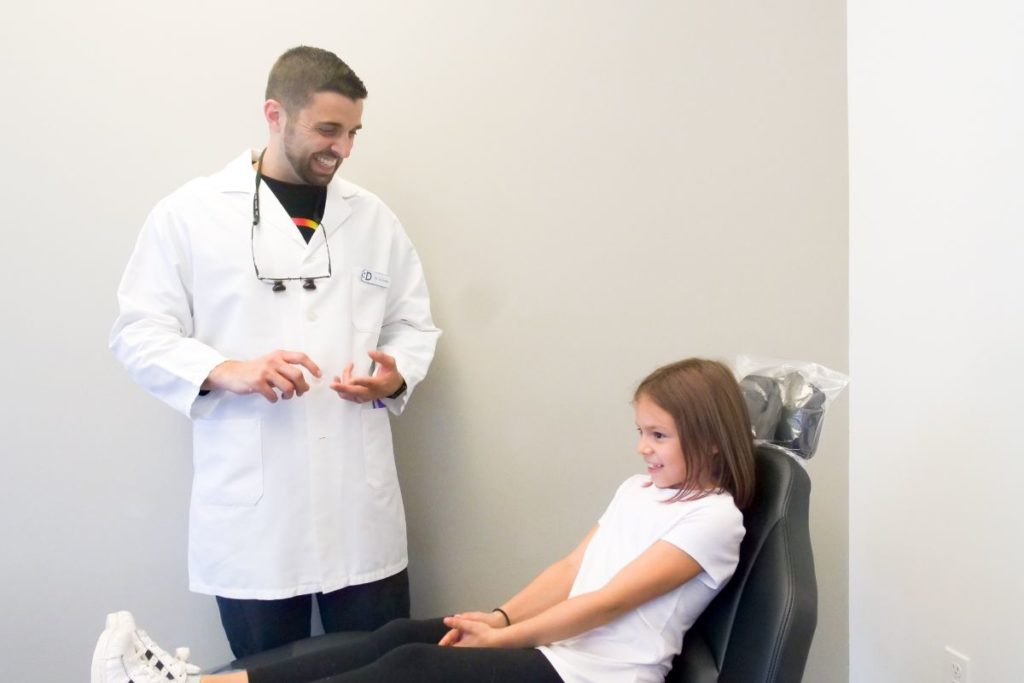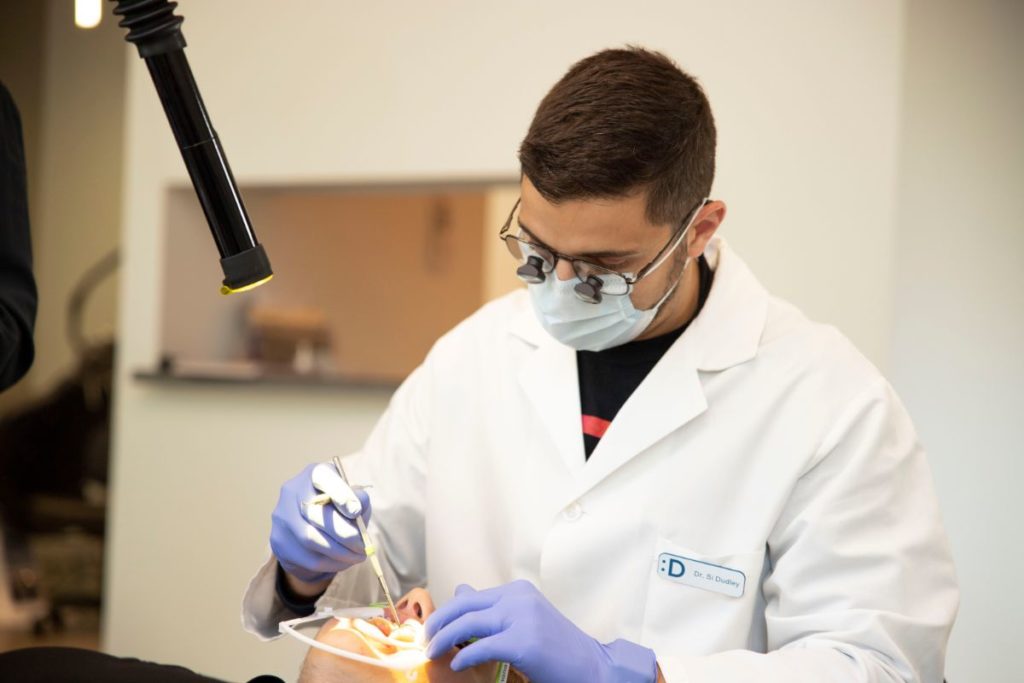Should You Consider Adult Braces?
March 29, 2019

Orthodontics has come along in leaps and bounds in recent years, with innovative techniques and technology creating a variety of effective treatment options. But when it comes to creating straighter, healthier smiles for patients of all ages, traditional braces are still one of the best tools we have. Braces have been the top treatment method for a long time, and it’s easy to see why once you take a look at how they work and the results they achieve. With an impressive track record of aligning teeth and improving oral health, traditional braces are an effective, long-lasting, and cost-effective option!
Beginning braces treatment with Dudley Smiles is an exciting time. After all, you’re starting a journey that will lead to a beautifully aligned smile that’s also fully functional! However, many patients still have questions and concerns they want to discuss before their braces are put on. Because it’s important to us that you feel confident in the orthodontic process, we’ve put together an outline that includes everything you need to know before beginning treatment. Keep reading below for the ABC’s of braces!
Knowing more about what braces are made of and how these components work together to move the teeth can give you a better understanding of the treatment process.
Brackets
Brackets are the part of braces that we attach directly to your teeth. They are typically made from a mix of durable stainless steel, nickel, ceramic, or other high-quality materials. There are tiny hooks or doors over which the wire is threaded, and brackets are secured by closing the door, or by applying an elastic over the top of the wire.
Glue
Tooth glue is essentially a form of the same composite bonding material we use for tooth-colored fillings or sealants. We use this adhesive to attach the brackets to the teeth. In some cases, we may use metal bands on the back teeth in conjunction with the glue to give braces more leverage and stability.
Wire
The wire is a thin piece of metal that runs from one bracket to another. We change the shape and curvature of the wire throughout the treatment process, which actively moves the teeth where we want them to go. For some patients, the wire will attach all the bottom or upper teeth together. For others, we may choose to cut the wire strategically if connecting only a few teeth makes more sense for the treatment plan.
Elastics
Almost every patient will need elastics at some point in their treatment plan, but they’re especially important for those who need bite correction. Elastics are most often strung between an upper bracket hook and a lower bracket hook, pulling the upper teeth backwards to correct an overbite, or the lower teeth backwards to correct an underbite. We use rubber bands for many different situations, but they can be particularly useful when we want to bring the upper and lower teeth together successfully.
Once you’ve decided on a customized treatment plan with Dr. Dudley, we’ll schedule you for an appointment to have your braces put on. Since your treatment plan includes information on how each tooth needs to move in order to achieve the best possible position, Dr. Dudley will use it to decide how to place the brackets. Once the brackets have been attached, the wire will be inserted. Bends in the wire will encourage specific and precise movements by providing different types of pressure on different teeth.
This process of tooth movement is called remodeling, and involves minor changes in the bone surrounding the roots of the teeth. When pressure is put on a tooth, cells called osteoblasts and osteoclasts form around its root. The pressure of the wire works with the osteoblasts and osteoclasts to create a negative pressure on one side of the tooth. At this site, bone is removed. On the other side of the tooth, bone is reformed. This system of pressure and remodeling slowly moves the tooth into the desired position.
The remodeling process can only occur while constant pressure is being placed on a tooth. Once the pressure stops, the tooth will begin to settle into its new position, but most will begin drifting back to their old positions over time. This is why it’s so important to wear the retainer we give you exactly as directed once your braces come off! Doing so will help keep your teeth in their new, improved positions and prevent any natural drifting from occurring.

You may find that caring for your braces comes with a bit of a learning curve, but hang in there! It just takes a little patience and practice. Because braces create numerous nooks and crannies that can trap food particles and other debris, it’s important that you clean your teeth and gums thoroughly each day. We recommend brushing at least two times each day with fluoride toothpaste, especially after meals and before bed. Pay close attention to the areas between the brackets and gums, and carefully clean between the wires and your teeth. Interdental brushes can make this easier, as they are designed to fit in those hard-to-reach spaces to remove plaque and debris.
Flossing is also an essential part of maintaining oral health, and it should be done nightly. If you find regular floss difficult to manage with braces, try a floss threader! Oral irrigators like a Waterpik are another excellent option. These instruments shoot a small, high-pressure stream of water onto the teeth, targeting food debris and plaque that can form between the teeth and braces.
Keep in mind that all of these tools are supplemental, and should never take the place of brushing and flossing.
Food restrictions can be challenging, especially in the beginning, but they’re necessary to protect both your braces and your teeth. During the treatment process, you’ll need to avoid anything too crunchy or too chewy, like chips, ice, gum, some raw fruits and veggies, popcorn, and many kinds of candy. The good news is, food restrictions are only temporary! All your hard work and dedication will be worth it when your braces come off and your beautiful new smile is revealed.
Every smile we treat is unique and every patient responds to braces in their own way, so there’s no “one size fits all” estimate when it comes to how long you’ll need treatment. On average, the active stage of orthodontic treatment can last anywhere from 6-24 months, but this may be longer or shorter, depending on your particular case.
The first step in your orthodontic journey is a FREE consultation with an experienced orthodontist like Dr. Dudley. If you’re in Issaquah, Kent, or the surrounding communities and would like more information on how braces can give you a straighter, healthier smile, get in touch with us today. The smile you deserve is waiting here for you!